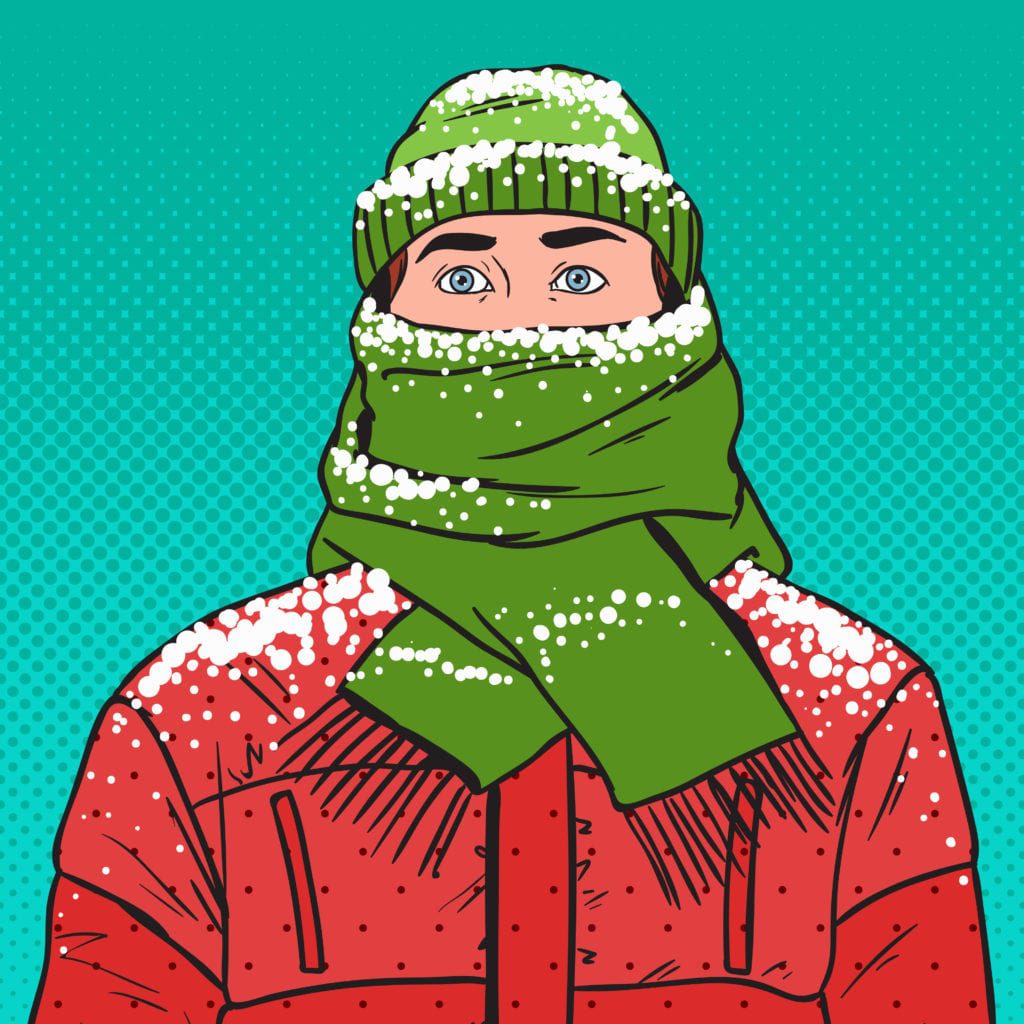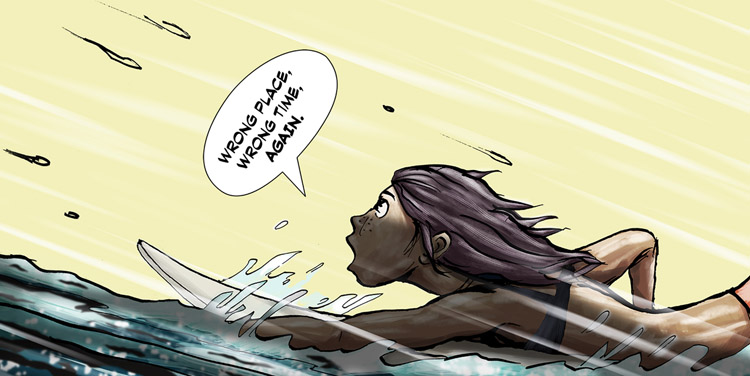As a local surfer was exiting the water following a late fall surf session, we overheard someone ask them “When does the Newfoundland surf season end?” to which the surfer replied, “What do you mean? It just keeps going“.
Winter surfing in Newfoundland and throughout Atlantic Canada is about as exotic as it gets.
If you’re a beginner surfer that’s looking to keep catching waves into the winter or a seasoned pro looking to extend the fall surf season, winter surfing is fun, rewarding, and a brand new challenge. In Newfoundland, winter surfing comes with its own special challenges and rewards.
If you’re considering checking out the Newfoundland winter surfing and SUP surfing scene, be sure to get some training before you go and understand the added dynamics cold water brings to the surfing equation.
So if you’re stoked on winter surfing, here are our top 16 winter surfing tips to help you have the best winter surfing experience possible.
HALF OF IT IS GEAR, THE OTHER HALF IT IS ATTITUDE

It goes without saying winter surfing requires some additional gear, planning, and commitment. Winter surfing in the North Atlantic is a mix of 50% gear and 50% attitude.
Not only will you need to be sufficiently stoked about the big winter swells, but you’re also going to need some extra gear, like a hooded winter wetsuit, gloves or mitts, and booties.
With proper winter surfing gear, you can stay comfortable in the water for hours. If your winter surfing gear sucks, however, you’ll end up cold and miserable. When hitting the winter surf, be sure to wear neoprene that fits well and is rated for the water temperature of the day. It’s not cool to be cold.
PUT ON YOUR WINTER SURF GEAR INSIDE

Put on your winter surfing gear indoors whenever possible. We realize this is not always an option, but if it is, take it.
When you gear up inside you’ll be warm from the very beginning of your session.
POWER OF THE SURF PONCHO
All done? Then get in out of it.
Again, if you have an option to change inside, do it. The worst part about winter surfing is changing outside in a windswept parking lot.
A surf poncho or big robe you can change inside can be the difference between pleasure and suffering when changing outside following a winter surfing session.
WINTER SURFING WETSUITS NEED TO FIT PROPERLY
Make sure you have the right sized wetsuit for surfing in the winter.
Thicker neoprene can feel restrictive if your wetsuit is too small. While a thinner wetsuit may stretch out over time, wetsuits thicker than 4mm don’t offer much expansion. If the suit feels too tight, especially in the shoulders, you should opt for a size larger.
IT’S NOT COOL TO BE COLD

If you’re cold when you go winter surfing you’re doing it wrong. With proper gear, you’ll feel comfortable in the water.
If, however, your wetsuit isn’t warm enough, your winter surf session will be short lived, and you put yourself at risk of hypothermia. The first time you get ready to go surfing in the winter, getting geared up will take longer than normal. In the winter, it always seems like a mission to get all your surf gear on. The key is to take your time. Getting suited up for winter surfing gets easier and easier as you do it.
PRO TIP: To slide your feet through your wetsuit easier, keep your socks on to make your feet slide effortlessly through the wetsuit as you put it on
DRYING YOUR WETSUIT AFTER A WINTER SURF SESSION IS KEY
Have a system for drying your wetsuit, booties, and gloves or mitts after each winter surf session. When it’s below zero, you can’t just hang your wetsuit out of the sun and in the wind like you normally do.
You will need a place inside that you can hang your wetsuit and let it drip (ideally not directly onto the floor). You’ll also need a fan to blow onto your gear for it to dry effectively.
Drying your wetsuit properly and completely after each session is the best way to keep it clean and free of bacteria.
REMEMBER TO WASH YOUR WETSUIT ONCE IN A WHILE
Like any piece of clothing that gets dirty, your wetsuit will need a wash once in a while. Never put your wetsuit into a washing machine or dryer since that will lead to its early demise.
Do, however, once in a while wash your wetsuit with mild dish soap and cold water. Same goes for your surf booties, mitts, and gloves. This will breakdown body oils and freshen-up even the dirtiest wetsuits while being gentle on the wetsuit itself. The reason why using hot water, dryers, and machines is bad is because the heat melts the glued seams in your wetsuit and washing machines cause mechanical damage and premature wear. Avoid all this with a little elbow grease, gentle soap, and love.
TRY A LONGER SURFBOARD IN THE WINTER, IF YOU WANT, OR WHATEVER
Think about your ride and consider upping to a larger volume surfboard or surf SUP for the winter surf season. The reason we say this is because with all the extra neoprene comes a little extra weight. When wearing a soaking wet winter hooded surfing wetsuit, one can easily add 10 lbs to their total weight, so choosing a higher volume surfboard or surfing SUP can help compensate for this.
SURFING IN WINTER SWELLS
So how is winter swell different? The mechanics of wind and wave creation remain constant no matter what month it is, but in the winter there are two main factors to keep in mind. Firstly, large winter surf waves tend to have a bigger wave period which means they are thicker at the base and have more mass. Secondly, more often than not, the wind is blowing offshore. Some people like to use a slightly longer surfboard in the winter to compensate for these factors, but shortboarders catching steep winter swells may not agree with this logic. Ultimately you’ll have to feel it out and be prepared to make adjustments.
CHECK THE SURF REPORT

Check the surf report and weather forecast details. With all the technology available today, it’s easy to see what the forecast is.
The waves and winds may be ideal now, but what are they supposed to do later in the day? Surf conditions, especially in places like Newfoundland, can change at a moment’s notice. Avoid getting caught by knowing what the forecast is calling for. This will make it easier for you to line up winter surfing during ideal conditions and help you avoid bad ones.
YOU CAN’T SURF IN CHUNKS OF ICE
Only surf in the water. What do we mean by this? Well, if the bay is chinked with ice don’t go. Who wants to surf with big heavy chunks of ice in the water? Imagine one of those hitting you in the impact zone?
WINTER SURFING AND NIGHT SURFING DON’T MIX

Go in before dark. Sunset surfs are great, and sometimes we get carried away and keep surfing even after the visibility drops.
This is never a good idea, but in the winter it should be strictly avoided. It gets dark early in winter, and nighttime temperatures start to go down with the sun, so plan ahead and go to shore well before dark, even if the rides are epic.
NEVER SURF ALONE IN THE WINTER
Always surf with a buddy (or buddies). This is a rule that should be applied year-round but is extra important when it comes to surfing in the winter months. Besides being safer, it’s also more fun to catch waves and share the stoke with a friend. If you do go alone, tell someone where you are going, surf conservative, and appreciate the added risk solo surfing brings.
PACK A HYPOTHERMIA KIT
Make a hypothermia kit and take it to the beach with you. At a minimum, you want to have a complete change of dry warm clothes, a towel, and a warm blanket or sleeping bag as part of your emergency kit.
Having this can save your life or the life of another winter surfer that becomes hypothermic. Know the warning signs of hypothermia and how to manage the early signs and symptoms of hypothermia.
If you start to get cold,
- go to shore
- warm up
- have a snack
Do a little pre-planning like packing a thermos with a warm drink and bringing that extra thick woolen hat. These things will go a long way in keeping you comfortable long after your winter surf session has ended.
BE A HAPPY SURFER
Be pleasant. By this we mean you should be in a pleasant and relaxed state when you go winter surfing, or surfing at any time. Nobody wants to surf angry.
Surfing is blissful, so make sure your head is in the right place. It’s supposed to feel good. You should feel good, and by proxy, others around you will also feel good and share in your stoke for surfing.
RESPECT THE LOCALS
Say Hi and make friends. If you see other surfers out in the water when you paddle out, be polite, wait your turn, and share the waves.
For some people, surfing is like church, so a little reverence sometimes goes a long way,
It’s great to just be out on the water catching waves that got created somewhere way out there. Some people believe the energy of the wave ends as it breaks. Others don’t believe the energy ends there. Whatever you believe, we hope your love of catching waves takes you on a wonderful journey.
If you’re excited about exploring the winter surf scene, we hope these Top 16 Winter Surfing and SUP Surfing Tips help you get started on your journey.
Have you had the pleasure of winter surfing? What were the highlights of surfing in the winter? Let us know in the comments below:




